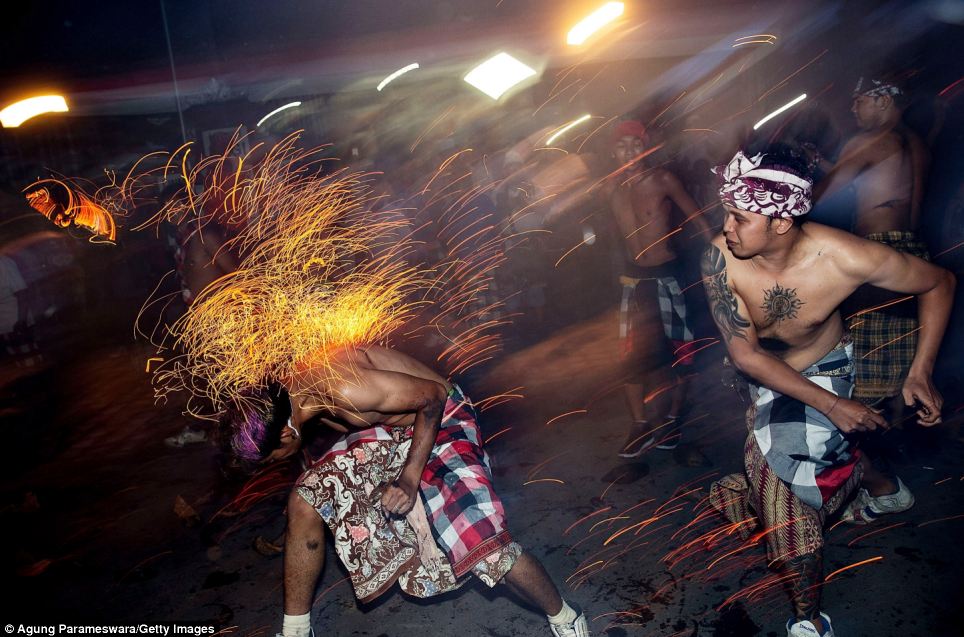Mesabatan Api: Battle of Fire
The sun had already set over the western horizon when numerous young men started playing gamelan at a high-pitched tempo. While in front of Banjar Nagi community center, two youth were busy burning coconut husks to set the fires.
The situation was on the edge when the lights were turned off. Ten minutes later, a man voiced a strong command in the Balinese language, “Inggih rarisan”. The ritual had started.

A male participant is struck on the head with a burning coconut husk as he takes part in Mesabatan Api, which symbolises the purification of the human body. (photo by: Agung Parameswara)
Upon hearing the official command, dozens of bare-chested youth clad in checked sarongs rushed to the piles of burning coconut husks to mark the start of the mesabatan api ritual, the battle of fire.
Mesabatan api is a unique tradition in Banjar Nagi in Gianyar regency, about 30 kilometers east of Denpasar. The annual tradition takes place during pengerupukan, the eve of Nyepi, the Balinese Hindu Day of Silence.
Amid the chaotic crowd, adolescent men took the blazing coconut husks barehanded, swinging and throwing them ferociously at the backs of their enemies.
On that dark, moonless night, the flying fires created a stunning sight in this remote village of Nagi.
The local residents placed more piles of coconut husks and set them on fire, while the sound of the gamelan orchestra intensified, serving as a horrendous musical backdrop for this aggressive fiery battle.
Strangely enough, these youths possessed no anger or hatred while performing this yearly ritual. They laughed and shouted happily while attacking their enemies with balls of burning coconut husks.
Using traditional medicines — a mixture of turmeric and coconut oil, easily treats the physical wounds. “Just rub the oil on them and the wounds will be healed instantly”.
The battle was divided into three sessions and stopped when all the youthswere exhausted.
“The ritual has been performed for hundreds of years. We don’t know its origin. But for certain we know that the aim of the ritual is to get rid of negative forces — symbolized by Butha Kala, within our bodies, souls and minds,” elaborated I Nyoman Sudana, chief of Nagi village.
Sudana also said that in present times, the battle of fire served as a physical and emotional outlet for young people to express their feelings and to channel their anger during the ritual. “After the ritual, the anger and negative feelings are all gone,” Sudana said.
After the ritual of mesabatan api, the warring youths chatted and danced together peacefully before taking part in the ogoh-ogoh procession.
Source: Agung Parameswara

